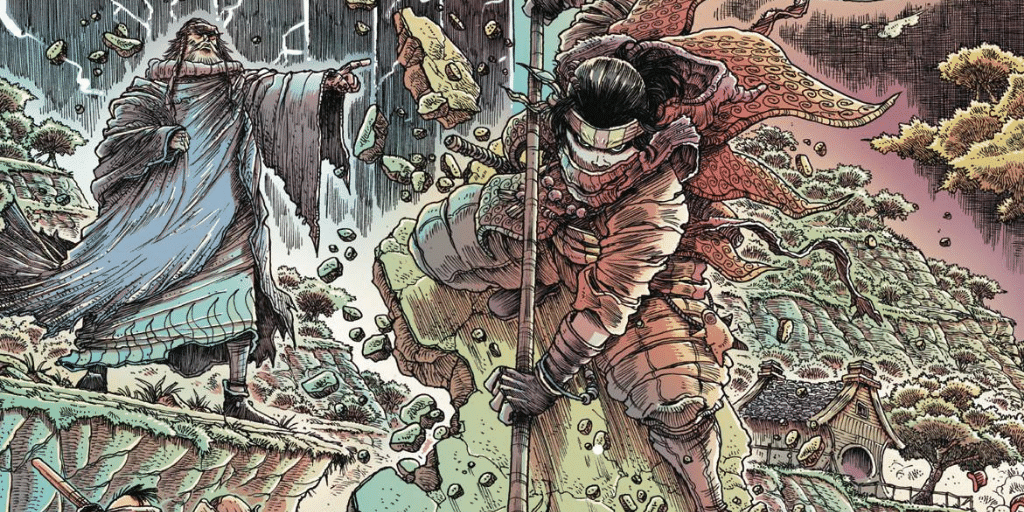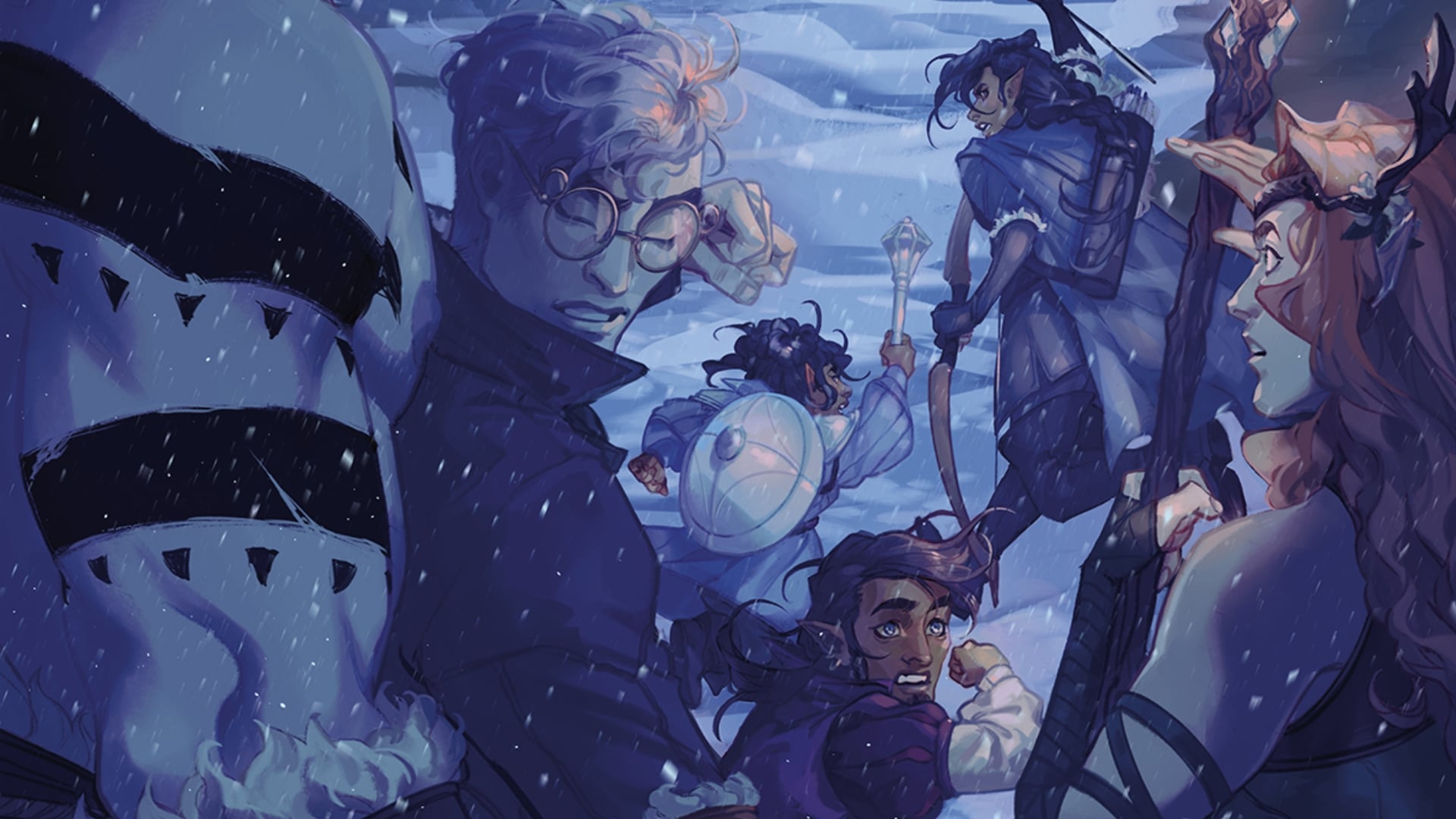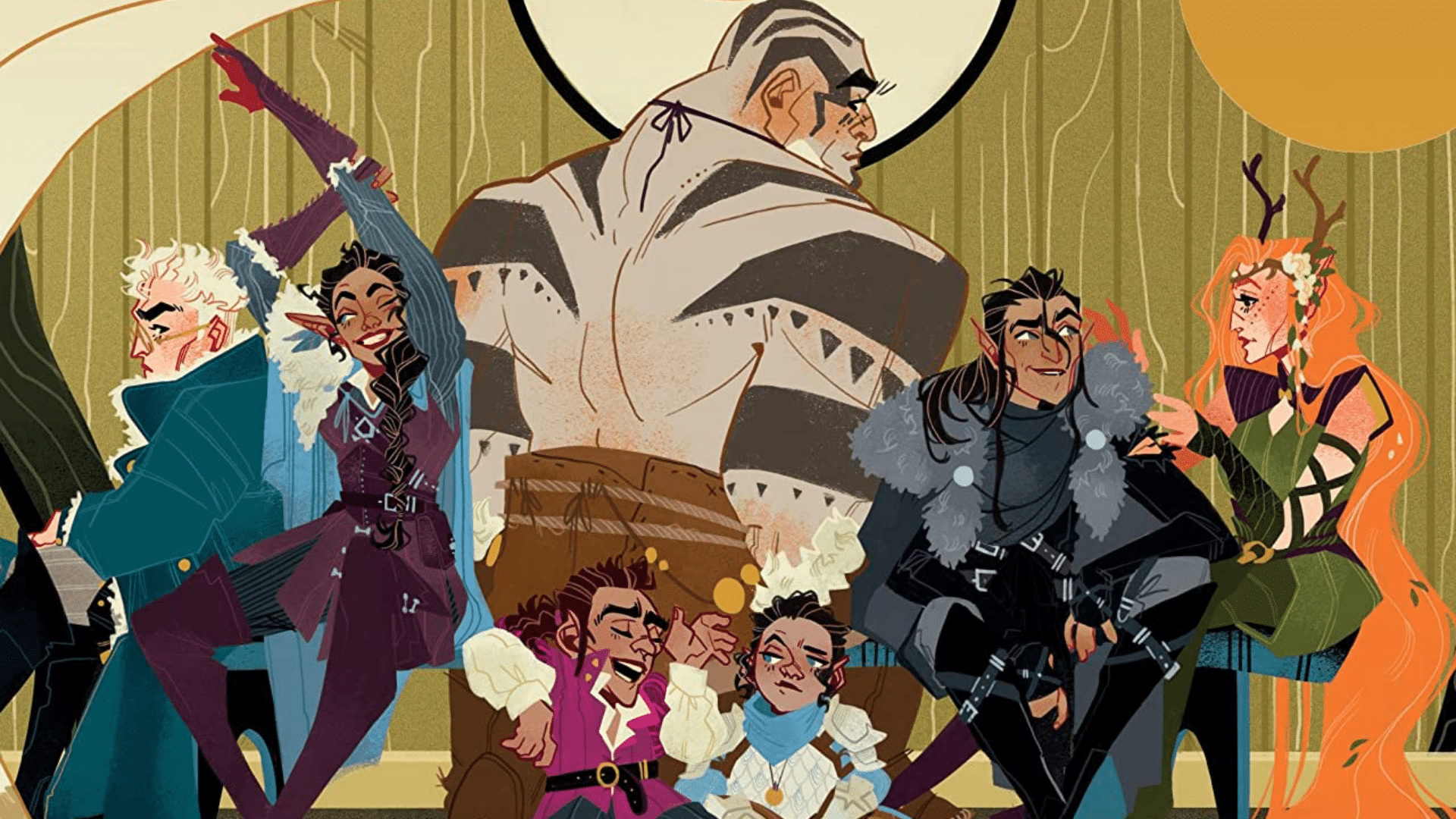I think this review has to start with the solicit for Orphan and the Five Beasts:
Spurred on by her master’s dying words, the adopted warrior “Orphan Mo” seeks to find and kill five former disciples who now threaten the land with corruption from their demonic powers. Part Five Deadly Venoms and part surreal grindhouse, James Stokoe brings his knack for ultra-detailed fantasy imagery and over-the-top violence to this classic tale of revenge.
I was intrigued by this description. I’ve seen Five Deadly Venoms, and I think there’s a severe shortage of martial arts comics (outside of Japan, Korea and China, where there’s an almost limitless supply). Orphan is also a Stokoe production (writing, drawing, coloring and lettering), which promises a certain quality. I was unprepared, however, for how overwhelmingly Orphan resembles Five Deadly Venoms.
In both works, an aged master tasks the final disciple with hunting down his five former disciples. In Venoms, it is to uncover these disciples’ hidden identities and determine which are living evilly. In Orphan, all five have turned to evil and must be systematically eliminated. In both works, the master delivers his exposition from a giant medicinal pot. Five Deadly Venoms isn’t just an influence but instead the spiritual predecessor to Orphan.
I respect Stokoe for being open about Five Deadly Venoms’ influence, and Orphan immediately and clearly diverges from the film. Martial arts movies have a peculiar genre succession: Wuxia movies gave way to more grounded movies set primarily during the Qing Dynasty, without wuxia’s signature wirework (these are films like Drunken Master, Prodigal Son and the aforementioned Venoms), which in turn became less popular than mobster and cop movies (Police Story or the In the Line of Duty series), and then back to wuxia movies (The Iron Monkey and most of Jet Li’s works). Martial arts movies feed on themselves, adapting familiar tropes and settings to keep things fresh while still feeling classic, no matter their period of production. For Stokoe to openly wear Five Deadly Venoms’ influence feels perfectly natural to the genre. Orphan’s open engagement with martial arts movie tropes, ideas and history makes this book feel truly genuine and loved.
Much of this first issue is spent on getting the plot out of the way. Several pages establish Orphan Mo and the setting, several more on the five disciples’ fall from grace, and the issue ends with the introduction of the first of the titular Five Beasts. There is only one fight in this entire issue, lasting just three pages, but if the rest of the series proceeds similarly, it promises to be an inventive and exciting comic. Martial arts in particular are difficult to capture on page as they require a sense of motion and grace that can be hard to capture in static images. Stokoe does an excellent job making the fight choreography interesting but perfectly clear, using clear white motion lines to highlight the movement of each panel. The fight rushes by, imbued with a great sense of momentum, and leaves you eagerly awaiting the next encounter.
The action is improved by Stokoe’s excellent sense of character design. Orphan Mo has a distinctive outfit with an interesting silhouette, making them appear more like an armored beetle than a human. Every ounce of clothing in this issue has a wonderful feeling of texture, so that the fantastical characters appear to occupy reality. The first beast, Thunderthighs, is certainly distinctive, but perhaps too goofy to be taken seriously (as may be the point).
I also want to pay more than lip-service to Stokoe’s excellent art. Every panel has an incredible amount of detail, and even more lines. The tatching on a roof, the leaves on a tree, and the open sky are all carefully rendered. Stokoe’s figures are dynamic and his expressions detailed. When Orphan’s master shouts from the hill, and when Orphan later challenges Thunderthighs, they are lit up by lightning bolts striking from the darkened sky, giving their declarations extra energy and weight. Stokoe alternates between lush green colorings, representing the natural beauty of the setting, and bright red explosions of violence and blood.
I am curious to see how this series progresses. Five Deadly Venoms was something of a mystery series, as our hapless protagonist (Seriously, he only fights once and is mostly mediocre) attempts to discern the identities of his master’s students. Here, Orphan Mo is a highly qualified fighter in their own right, and Stokoe appears to be setting up a straightforward series of confrontations, a pattern I hope gets complicated later. Thunderthighs, and the implied specialties of his comrades, also calls to mind the different schools of Five Deadly Venoms (and more literally, Shaolin Soccer, where each master has their own soccer-applicable skillset, usually related to a part of their body). My only reservation about Orphan is that it may stay too close to its film origins, and not innovate or stray in a meaningful way.
Orphan and the Five Beasts promises to be a worthwhile addition to the martial arts genre on the whole. It captures the best features of martial arts movies on its pages, and is filled with Stokoe’s distinctive style.
Ian Gregory is a writer and co-host of giant robots podcast Mech Ado About Nothing.






